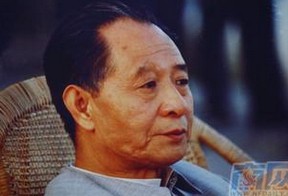
Andrew Bauer needed a way to invigorate his staff working the production line.
“I used to have them working up to nine or 10 hours a day,” said Bauer, chief executive officer of Royce Leather in Secaucus, New Jersey, in the US, which makes wallets, luggage and other leather accessories.
But the longer his employees worked, the more their productivity declined. So last year, after taking over the company from his father, Bauer cut the workday of his 15-person assembly line by two to three hours, depending on the position. Workers still received the standard breaks, including 45 minutes for lunch.
Bauer’s goal was to boost efficiency, not to cut payroll. On the contrary, he increased the team’s compensation by 15%.
Switching to a seven-hour workday paid off: output went up, with the line churning out 10% to 15% more merchandise each day. Plus, he added, his staff — many of whom have been with the company one to three decades — appreciated getting home earlier.
Shorter workdays have made headlines lately, thanks to Gothenburg, Sweden. On 1 July, the city began a year-long experiment with six-hour days, enlisting a segment of government employees to work less than their eight-hour-a-day counterparts, for the same pay.
The hope is that staffers working shorter days will accomplish just as much, only with more efficiency and less calling in sick. It’s a nice idea, but will it — and other efforts to shorten hours in the office — work?
The grand productivity experiment
Studies of past attempts by various countries to trim employees’ workdays have yielded conflicting results.
Last year, research from the Organisation for Economic Co-operation and Development (OECD) reported in The Economist showed that the more people worked, the more their productivity tapered off.
But South Korean research detailed in the Journal of Happiness Studies last year found that employees appreciated shorter workdays in theory only. In practice, researchers found, the country’s 2004 workday reduction from 44 hours to 40 — and a declaration of Saturdays as an official day off — didn’t do much to improve workers’ job satisfaction or overall happiness. Instead, having less time to tackle the same workloadincreased their stress. The workload, it turned out, for these already-efficient employees was simply too high to get done in fewer hours.
And back in 2005, Sweden’s Kiruna district council ended a 16-year-run of mandated six-hour workdays for 250 employees, claiming the programme cost too much and was too unwieldy to manage. According to the council, managing two different sets of employee work schedules — the six-hour day and the eight-hour day — had grown too complicated. The European news site The Local also reported that at a similar experiment a hospital in Stockholm created resentment among employees whose schedules hadn’t been reduced.
Whether reduced workdays succeed may have more to do with the type of work performed, the workload and the managers overseeing it than the country or company making the change. Part of the problem is that one work schedule won’t necessarily fit all employees or job descriptions, said Cali Williams Yost, a workplace strategist based in Madison, New Jersey.
“In a competitive global economy, I find these one-size-fits-all, strict models are hard to maintain to the letter,” said Williams Yost, author ofTweak It: Make What Matters to You Happen Every Day.
When shorter workdays don’t work
Kenny Kline of MedPreps can vouch for that. In 2012, Kline trimmed the workday of 20 full-time employees he’d hired to write practice questions for medical certification exams, keeping their salaries intact. The four-month experiment was a failure.
Giving employees only six hours a day to devise test questions instead of the customary eight changed the company culture for the worse, said Kline, co-founder of the St Louis, Missouri-based company, which sells medical exam preparation materials in the US.
“People definitely worked harder and we ended up getting more out of them,” Kline said. “But they wouldn’t interact with each other at all. And they were a lot less happy at work.”
Without much time for lunch or other breaks, the camaraderie his staff once enjoyed ground to a halt. What’s more, Kline said, employees were too mentally drained at the end of the day.
“People felt a lot more burned out working six hours a day just because of the intensity,” Kline said.
Royce Leather’s Bauer can relate to the need for some people to put in more time to be more productive. At the same time that he reduced his production team’s workday, he gave his 20-person product development and design staff a pay bump and encouraged them to start working 10 hours a day instead of their customary eight. The idea was for them to create and collaborate on ideas at a more leisurely pace.
“The time increase has definitely made the office a lot more relaxed,” Bauer said. “There’s not as much stress, which definitely makes everyone a lot more productive.”
In praise of flexibility
For a shorter workday to succeed, companies have to treat the change in office hours as a guideline that can be adapted to meet various employee and business needs, not a rigid rule, Williams Yost said.
For example, she said, “What about business that has to get done in time zones during the hours the workplace is closed?” And what of companies who pile 40 hours of work on employees who only have 30 paid hours in which to get the job done?
For Jody Greenstone Miller, whose 75-person in-house staff includes people who’ve chosen to work 10, 20, 30 or 40 hours a week (for commensurate pay), knowing how long each assigned task takes is key.
“As a manager, you have to make sure people don’t work too much,” said Greenstone Miller, chief executive officer and co-founder of Business Talent Group, a consulting firm with five US offices and clients throughout Europe, Asia, Australia, North America and South America. “Because if they work too much, they end up being dissatisfied,” she said.
Debbie Carreau, chief executive officer and founder of Calgary, Alberta-based Inspired HR Ltd, agrees. To prevent “workweek creep” — and as an example to the dozens of Canadian and US companies her human resources firm serves — Carreau’s 12-person team handles the bulk of their work between 9:00 and 15:00. After that, the team goes home but stays on call, often fielding emergency messages one or two hours a night from clients dealing with on-the-job accidents, performance issues and resignations.
“People are not productive after a 37-hour week,” Carreau said. “More does not mean better.”




